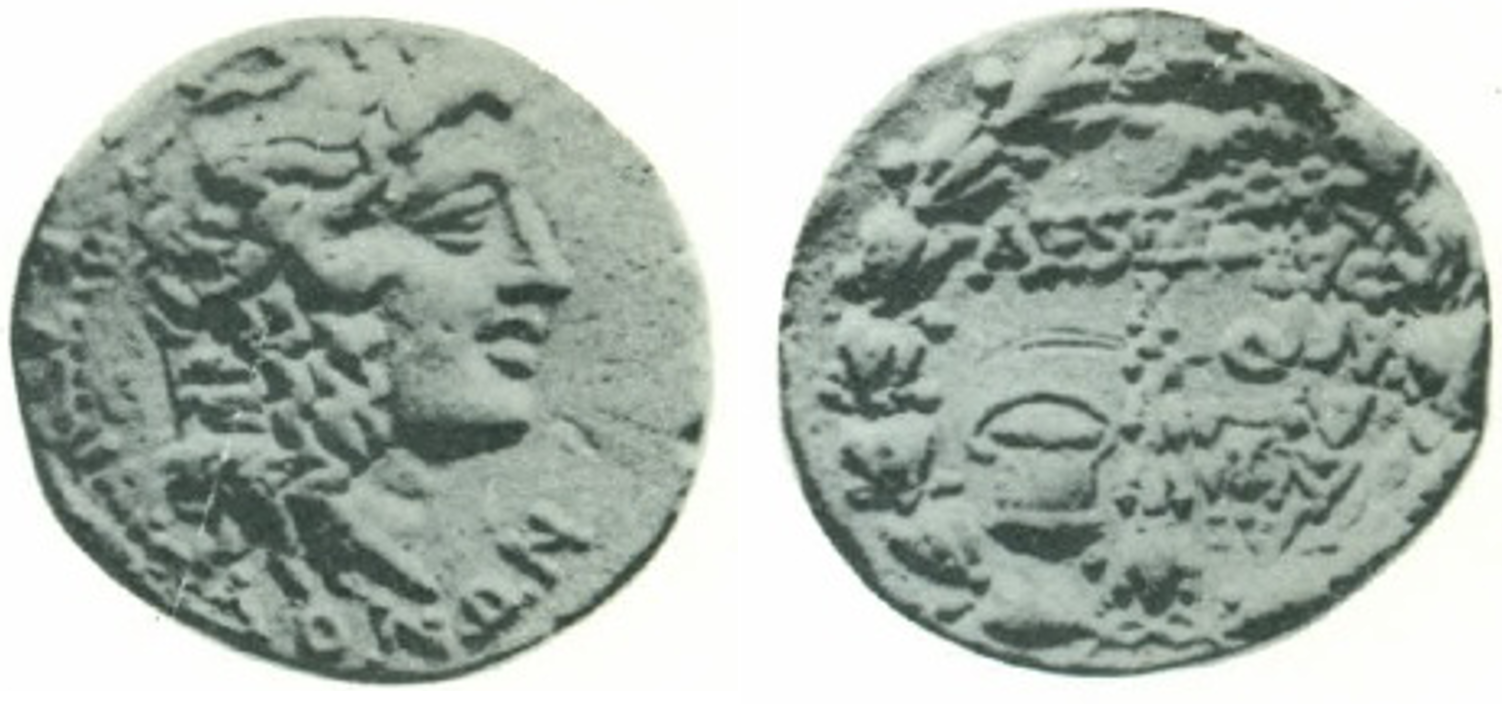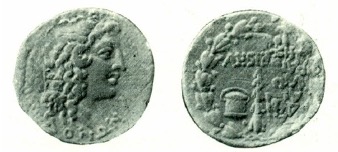3384 - Thessalonica (Aesillas) (tetradrachm Alexander/club) over Athens 125/124 BCE (Athena/owl) (Berlin, Münzkabinett, 214/1907): Difference between revisions
From SILVER
No edit summary |
No edit summary |
||
| Line 29: | Line 29: | ||
|Overstruck ancient region=Attica | |Overstruck ancient region=Attica | ||
|Overstruck denomination=tetradrachm | |Overstruck denomination=tetradrachm | ||
|Coin series reference overstruck= | |Coin series reference overstruck=Thompson 1961, p. 382 | ||
}} | }} | ||
Revision as of 14:41, 24 May 2023
95 BCE - 70 BCEMAKEΔΟΝΩΝ | AESILLAS Q
Location/history
| Museum collectionMuseum collection: | Berlin, Münzkabinett, Staatliche Museen, 214/1907. | |
Overstriking coin
Description
| ObverseInscription or printing placed on the obverse.: | MAKEΔΟΝΩΝ (Greek) Head of Alexander the Great right. Behind head, Θ. | ReverseInscription or printing placed on the reverse.: | AESILLAS Q (Latin) Fiscus, club and sella curulis. All within laurel wreath. |
Mint and issuing power
| MintIdentifies the place of manufacture or issue of a numismatic object.: | Thessalonica | Ancient regionAncient region. | Macedon | Modern countryModern country: Greece | AuthorityIdentifies the issuing power. The authority can be "pretended" when the name or the portrait of X is on the coin but he/she was not the issuing power. It can also be "uncertain" when there is no mention of X on the coin but he/she was the issuing power according to the historical sources: | Aesillas (quaestor in the Roman province of Macedonia in c. 90 BC), Roman Republic |
Chronology
| FromIdentifies the initial date in a range assigned in a numismatic context. 95 BCE toIdentifies the final date in a range assigned in a numismatic context.. 70 BCE | hellenistic periodTime period of the numismatic object. |
Physical description
| MetalThe physical material (usually metal) from which an object is made.: Silver |
WeightWeight of the numismatic object (in grams). in grams: 16.116.1 g <br />16,100 mg <br /> | DenominationTerm indicating the value of a numismatic object. Examples: tetradrachm, chalkous, denarius.: tetradrachm |
|
| DiameterDescribes diameter of an object (in mm).: 3030 mm <br />3 cm <br /> | StandardStandard.: Attic (reduced) | ||
References
| Coin referenceReference of the Coin: | Thompson 1973, p. 56, pl. A, 1. | Coin series referenceReference to coin series study: | Bauslaugh 20001Bauslaugh 2000, Groups I-III, V-VI and VIII (dies O94-R353), HGC 3.12HGC 3.1, n° 1110 |
Overstruck type
Description
| ObverseInscription or printing placed on the obverse.: | Head of Athena. | ReverseInscription or printing placed on the reverse.: | ΔΕΜΕΑΣ-ΚΑΛΛΙΚΡΑΤΙΔΗΣ (Greek) Owl on amphora. |
Mint and issuing power
| MintIdentifies the place of manufacture or issue of a numismatic object. ᵖ: | Athens | Ancient regionAncient region. ᵖ | Attica | Modern countryModern country: Greece | AuthorityIdentifies the authority in whose name (explicitly or implicitly) a numismatic object was issued. ᵖ: |
Chronology
| FromIdentifies the initial date in a range assigned in a numismatic context. toIdentifies the final date in a range assigned in a numismatic context.. | periodTime period of the numismatic object. |
Physical description
| DenominationTerm indicating the value of a numismatic object. Examples: tetradrachm, chalkous, denarius. ᵖ: | tetradrachm |
References
| Coin type referenceReference to coin series study ᵖ: | Thompson 19613Thompson 1961, p. 382 |
Additional data
| Frequency of overstrikesFrequency of overstrikes: | Level of confidenceLevel of confidence of the identification: | ||
| RemarksRemarks: | |||
References
- ^ Bauslaugh, Robert A. (2000), Silver coinage with the types of Aesillas the Quaestor, Numismatic Studies 22, New York.
- ^ Hoover, Oliver D. (2016), Handbook of coins of Macedon and its neighbors. 3. Part I: Macedon, Illyria, and Epeiros, sixth to first centuries BC, Lancaster, 437 p.
- ^ Thompson, Margaret (1961), The new style silver coinage of Athens, Numismatic Studies 10, New York, 2 vol.

